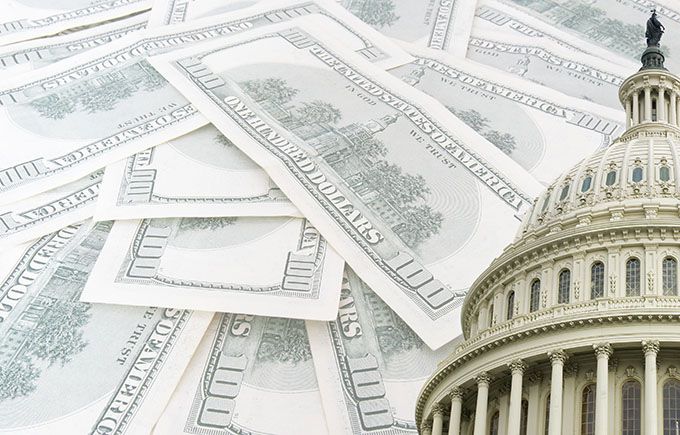
The average FICO score in the U.S. rose to an all-time high of 710 in 2020, according to data from Experian. Millennials enjoyed the biggest increases, with an average gain of 11 points from the year before. Lower consumer spending and government pandemic-relief efforts helped fuel the trend.
Lower Delinquency and Utilization Rates Drove the Increase
The coronavirus pandemic has wreaked havoc on the U.S. economy, forcing tens of millions to file for unemployment benefits and worsening the food insecurity crisis in the country.
In spite of that, Americans managed to increase their credit scores. Millennials, for example, had an average score of 679 in 2020, up from 668 in 2019. Other generational groups also saw their credit scores rise on average, although by smaller amounts. Members of the Baby Boom generation (age 56 to 74) saw only a 5% increase, but their scores were already higher, averaging 731 in 2019.
According to Experian, the rise was due to the two most important factors FICO considers when calculating scores.
The first is payment history. During the pandemic, delinquency rates dropped significantly, especially accounts that were past due by 90 to 120 days, where the rate fell 53%. Accounts that were late 60 to 89 days and 30 to 59 days saw decreases of 36% and 37%, respectively.
The second reason for the surprising improvement is lower credit card balances, likely due to reduced spending as more consumers stayed at home for most of the year. After a decade of consistent growth in credit card debt, the average balance dropped by 14%. As a natural result, the average credit utilization ratio decreased by 3.5 percentage points.
Government Relief Also Had an Impact
The CARES Act, passed in March 2020, included some provisions that may have helped prop up credit scores during the pandemic.
For starters, Congress voted to pause student loan payments on federally held loans for six months. Before the suspension period ended in September, President Trump extended it, then did so again in December. Shortly after President Biden assumed office, he extended the payment freeze again until September 2021.
Student loan debt has put a significant squeeze on graduates’ budgets in recent years, and not having to make their loan monthly payments may have helped many pay down other debts. What’s more, there have been no delinquencies on federally held student loans because payment currently isn’t required.
In addition to the student loan payment pause, the government also provided relief for homeowners with federally backed mortgage loans, including forbearance and deferment accommodations.
But Unemployment, Food Insecurity Remain High
Of course, credit scores are just one indicator of an individual’s financial health, and many Americans are still ailing. Despite credit scores increasing in 2020, the unemployment rate remained high compared to before the pandemic began. In December, the number was 6.7%, which is down from roughly 15% in April but still almost twice February’s 3.5%.
Tens of millions of people are also still facing food insecurity. In one recent move, President Biden signed an executive order on Jan. 22 to increase Supplemental Nutritional Assistant Program (SNAP) benefits, commonly referred to as food stamps, for low-income Americans.